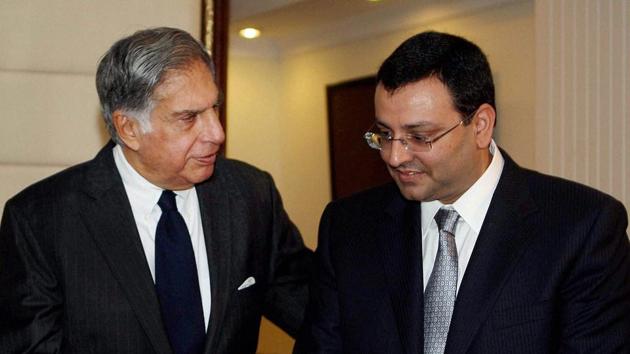Post Cyrus Mistry, governance structure in Tata group needs to be redefined
The Tatas wanted the world to see Mistry as an inexperience parvenu who wanted the house of Tata to become the house of Mistry. And the Mistry camp wanted it to see Ratan Tata as an interfering busybody loath to let go. Both depictions are patently false, but the damage has been done
It began with a bang on October 24.

And it ended (or at least one phase of it did) with a whimper on February 6.
Between Cyrus Mistry’s abrupt and shocking firing as chairman of Tata Sons Ltd (on the first date) and his removal from the board (on the second), though, he has raised enough questions about the Tata group (never mind that he was part of the establishment from 2006 and only chose to raise these when things didn’t go his way) to change most people’s perception of what was once India’s most respected business group.
That reputational halo served the group well.
For one, it ensured that the group received uniformly good press.
For another, it helped the group avoid being caught in scandals that ensnared lesser companies. For instance, when the government’s auditor was looking at companies that benefited by the 2G scam by getting licences and spectrum and then partnering with a foreign firm, it ignored the only case where such a partnership involved a sale of equity by the Indian company’s promoters. That was Tata Teleservices Ltd’s stake sale to NTT DoCoMo Inc and the auditor thought it didn’t deserve a closer look because Ratan Tata is an honourable man.
Read | Tata-Mistry row: Will they be able to bury the hatchet?
That halo — not dented by the group’s use of C Sivasankaran as a preferred dealmaker or Nira Radia as flak-catcher and spin doctor rolled into one — is now gone. There are those who believe it should have never been there, but that is arguable. There is much to admire about the Tata group, including (and not the least), the Tata Trusts, which are the eventual beneficiaries of the profits of the conglomerate, and the work that they do. From its role in building premier educational and scientific institutions — the Tata Institute of Fundamental Research, the Indian Institute of Science, the National Centre for Biological Studies — to their part in the globalisation of Indian business (the acquisition of Tetley, Corus Group Plc, National Steel, Tyco Global Network, and Jaguar Land Rover), there’s much that the Tata group has done that it can be proud of, and justifiably so.
Not so with l’affaire Mistry.
Events of the past three months have raised questions not just about his firing but also his hiring. Not to question Mistry’s abilities but it isn’t clear why the selection committee of Tata Sons thought he would make a good chairman in the first place. Maybe the committee was swayed by his family’s 18.4% stake. Or maybe it thought that the soft-spoken and young (he was 45 when he was named to the post) would listen to Ratan Tata, the then chairman of Tata Sons.
Read | Lessons from Tata-Mistry battle: Shareholders want strong independent directors
Nor is it clear why the board of Tata Sons decided to fire him, and do so without giving him enough time to stage a graceful exit.
For the three months following that, Tata Sons was at pains to paint Mistry as a land-grabber and a poor manager not in sync with the culture of the Tatas. And Mistry , in turn, sought to highlight mismanagement and cosy relationships at the Tata group that he, a new broom, had tried to sweep clean. Both sides have also insinuated far worse, especially in off-record conversations with media. The Tatas wanted the world to see Mistry as an inexperience parvenu who wanted the house of Tata to become the house of Mistry. And the Mistry camp wanted it to see Ratan Tata as an interfering busybody loath to let go. Both depictions are patently false, but the damage has been done.
Read | Tata Motors non-committal on Nano’s future
Mint reported last week, before the extraordinary general meeting of shareholder of Tata Sons on February 6, that while Mistry seemed to be losing ground to Tata Sons, the legal battle between the two is far from over. The National Company Law Tribunal is yet to go into the merits of the case and study the pleas of the two sides. That could and probably will take time.
Even as it continues to fight that battle, Tata Sons has the task of dealing with the reputational carnage left in its wake. The onus of doing this is on incoming chairman N Chandrasekaran but more so, on Ratan Tata. He can do this by redefining governance structures at the Tata group, creating well-defined roles for the Tata Trusts (which own 66.67% in Tata Sons), the holding company, and the operating companies. This will also insulate the Tata Trusts from negative attention of the sort they have received in the past few months.
Read | Infosys: A Tata-Mistry in making, but Vishal Sikka no Cyrus Mistry
But more importantly, Ratan Tata will also have to work at showing the world that he is capable of letting go and allow Chandrasekaran be his own man.
That may not help resurrect the halo, but it could bring back some of the sheen.
R Sukumar is editor, Mint
letters@hindustantimes.com





